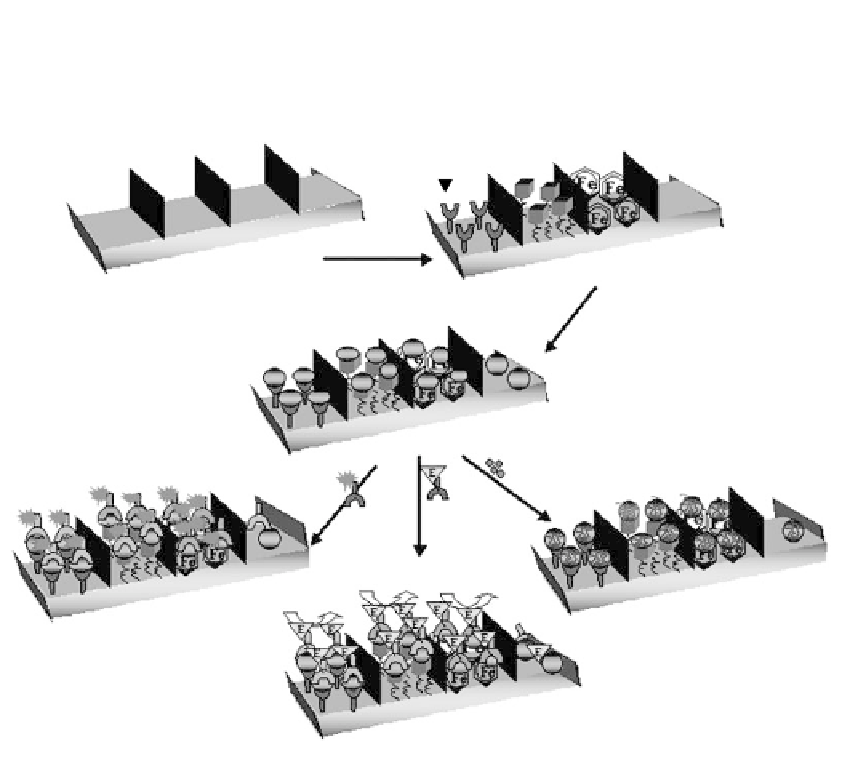Biomedical Engineering Reference
In-Depth Information
Bacterial membrane
receptors (other than Ag)
Fe-containing
reagents (hemin)
Primary antigen
4
4
3
3
2
2
A
1
Optical array
1
Bacterial pathogen
B
Enzyme-labeled antigen
4
3
Fluorescent-labeled antigen
Nucleic acid stain
2
1
C3
C2
C1
4
4
P
S
P
S
P
3
3
S
2
2
1
1
4
3
2
1
FIGURE 19.3
(See color insert following page 330)
Possible configurations for array immunosensor.
with no immobilized molecule, is shown as a control. (B) Binding to all three sites would
provide a more confident result as compared with a sensor with a single type of molecule
comprising the capture surface. (C1) The captured cells can then be tagged with a fluores-
cent-labeled antibody for detection. (C2) Alternatively, signal amplification can be
employed using an antibody-enzyme conjugate and an appropriate substrate (ELISA).
(C3) Cells can also be labeled with nucleic acid stains that are selective for live cells only
or all cells (viable cells and those with compromised membranes).
19.4.2
Electrochemical Multiarray Sensors for Pathogen Detection
Electrochemical sensors for pathogen detection are an attractive area of research because
of the simple instrumental requirements that are amenable to miniaturization. Unlike
optical systems, electrochemical sensors do not require excitation sources, filters, and
lenses. Additionally, they are not susceptible to interference from turbid samples.
Electrochemical sensors, including immunosensors, have been reviewed elsewhere (50).
A microelectrode immunosensor array for the detection of
E. coli
0157:H7 was devel-
oped (51). Each sensor chip had a total of 1,700 electrodes in a total area of 9.6 mm
2
.







